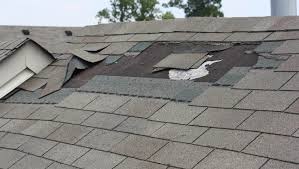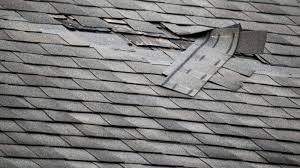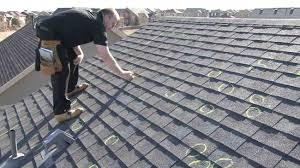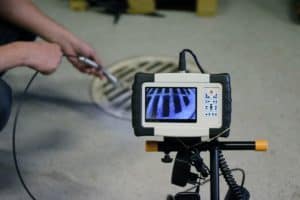How to Inspect a Roof for Roofing Damage
The Importance of Roof Damage Inspections
Sometimes it’s immediately obvious that there’s a problem with your roof, such as broken tiles on the ground after a storm or water leaking through your roof after heavy rain or hail storm. Importantly, it’s not always so simple to spot some of the signs of roofing damage, at first glance. Knowing how to check your roof for roofing damage is very important, as you’ll be able to identify serious problems quickly and stay one step ahead of maintenance concerns when they arise. Once you know how to perform basic checks, it’ll be easier to monitor the health of your roof and catch small problems before they escalate into expensive repairs!
Here are three simple steps for how to check your roof for roofing damage:
Step One: Inspect the Property Exterior
Examining the roof from the ground is the best place to start. You should be able to get a good idea of your roof’s condition this way, just make sure that you make a note of any areas that look abnormal or have clear signs of damage.
Slowly make your way around the exterior of your home, checking the ground and roof for signs of damage like fallen branches and broken/missing shingles. Keep an eye out for moss and algae growth on your roof, as it’ll need removing to prevent moisture damage. If the moss has been in place for a long time, then it may already have caused damage.
Next, you need to take a closer look at the shingles. If you’re not comfortable climbing up to your roof or you don’t have the correct safety equipment, then using binoculars will help you to identify problems. Check for aged, cracked, and sagging shingles, and any signs that the shingles are curling, buckling, or have lost their texture.
If any shingles are missing or have become damaged or separated, the inside of your home will be much more vulnerable to water damage.
Inspecting Metal & Flat Roofs
If your home doesn’t have a shingle roof, then inspecting it can actually be a lot easier. You can quickly inspect metal roofs for dents, holes, rust, and panel separation. For flat roofs, keep an eye out for tears in the material, holes, and standing water.
Step Two: Look Around the Attic
After checking the exterior, it’s time to inspect your attic. If your roof is damaged, then there’ll often be visible signs of the damage on the interior.
First check for any signs of active leaks – using a flashlight will help you to spot water quickly. Then check for holes, making sure that you inspect all parts of the roof carefully for signs of light leaking in.
Water rings on the roof, areas that are darker than others, and sagging are all clear signs that your roof has been damaged.
Step Three: Examine the Flashing, Guttering & Vents
Flashing is a thin metal strip that’s used to seal joints and keep water out of the interior of your home; vents, chimneys and other objects on your roof will have flashing. Using binoculars again if you have them, check the flashing on your roof for gaps, rust, or signs that it has moved – the flashing should be completely flush with the roof.
Next, check your vents for dents or other visible signs of damage. Make sure that they’re not blocked and are working properly.
Finally, you need to inspect your guttering. Blocked and damaged gutters can cause major damage to your roof, so it’s important to check them properly. Check whether the gutters are sagging or have become loose, inspect them for tears and holes, and make sure there are no blockages.
You should also check the gutters and downspouts for signs of granules that may have come off the shingles.

Why should you inspect your roof?
Roof systems can deteriorate from normal wear, severe weather conditions (e.g. wind and snow loads) building movement (e.g. settlement, material contraction/expansion) and even improper design, so it’s vital that you inspect your roof regularly in order to identify any issues that have developed or may soon occur.
How often should you inspect your roof?
Regular inspections of your roof will lead to early detection of problems. We advise that you perform annual formal visual roof inspections when your roof is free of snow and materials, and informal inspections after any severe weather conditions occur.

What to look for when checking a roof
You can hire a property inspector to do a thorough roof inspection or opt to do it yourself. While it it not the most technical job in the world, homeowners should know what to look for when checking and inspecting their roof. Check if the shingles are intact and in a good condition, and not deteriorating. There should also be no missing tiles.
In addition to the roof, inspect under the eaves and overhangs, the fascia, and guttering for any water damage. Check around all roof interruptions such as skylights, dormers, chimneys, roof mounted antennas or satellite dishes, and vent pipes.

Inspecting different roof types
It’s important to understand that different roof types require different inspection techniques and can be susceptible to different issues. Below we have a guide to how to inspect different roof types. If you’re looking for a more in-depth guide to different types of roof tiles and slates, you can find a comprehensive guide here.
Asphalt roofing
When asphalt shingles age they become brittle and the granules can detach from the shingles. Inspect for bare spots as well as torn or warped shingles.
Metal roofing
Commonly steel, copper, aluminium, or galvanized iron. Most metal roofs have a life expectancy of about 50 years. Perforations, pits, rust, or corrosion can help determine the age of the roof. Check the seams, corners, and joints for loose, dried out, or peeling caulk or another seam material.
Slate and/or clay tile roofing
These normally have around 75 years or lifetime warranties, but they can leak sooner depending on the quality of workmanship. When inspecting, you should avoid walking on these materials as they can break under the weight.
Wooden shakes or shingles
Again, avoid walking on this material. Instead, simply inspect using binoculars or from a ladder. Weather will deteriorate wood shakes and shingles over time. See if there are missing, rotted, warped, or broken shingles or shakes. If a third or more of the roof is damaged, the whole roof needs replacing.
What type of roof damage is not covered by home insurance?
An average homeowner’s insurance policy usually covers things like roof leaks and other roof damage. If your roof is damaged by fire, hail, or wind, then your home insurance should cover the costs of repairing that damage. If that fire, hail, or wind causes a leak in your roof, then home insurance should cover the cost of repairing the roof and any other damage caused by that leak.
However, there are certain types of roof damage that will not be covered by home insurance, including:
- Wear and tear damage on an older roof
- Damage caused by unresolved maintenance issues; if your roof has been leaking for years, for example, and you have ignored it until recently, then you may not be able to claim damages caused by that leak.
- Roof damage caused by wind and hail if your home insurance policy has wind and hail exclusions. See important tips for roof hail damage here.
- Damage caused by failing to take immediate action after a storm, like failing to put a tarp over the hole in your roof in the days following an accident, leading to more water damage.
Consult your home insurance policy to determine what is and is not covered by your home insurance.
